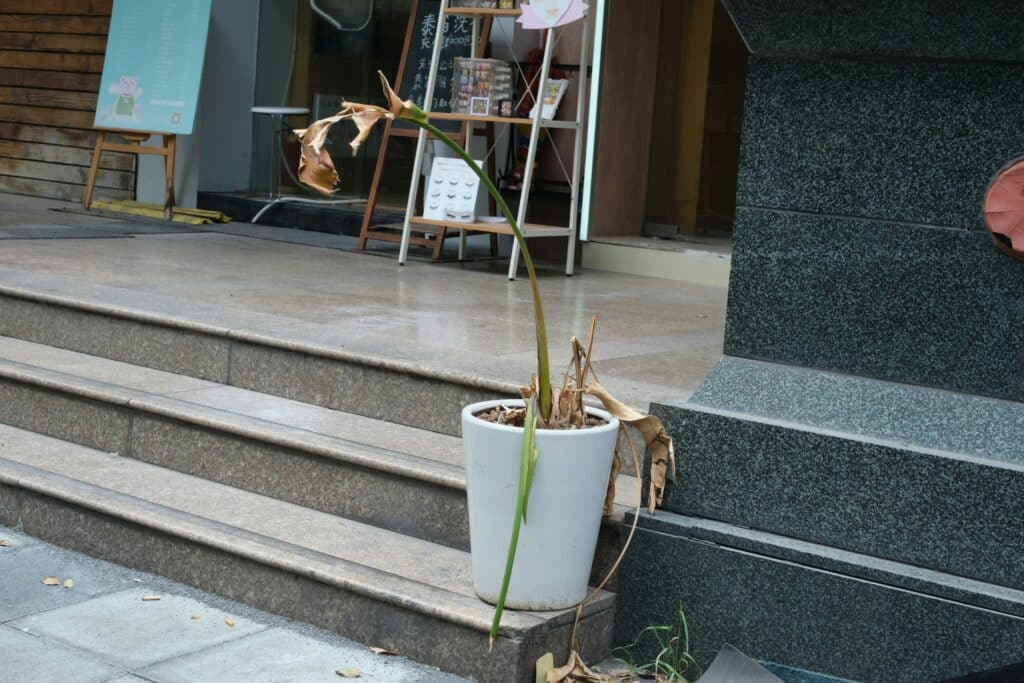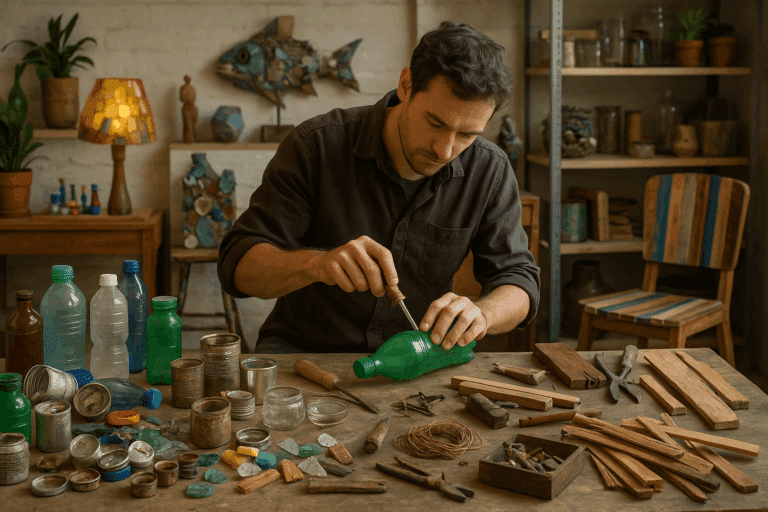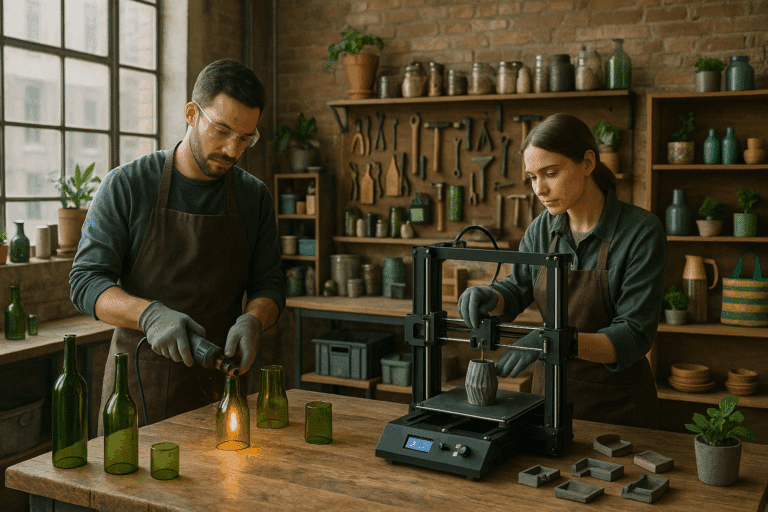Our topic of discussion? Old Shoe Succulent Planters! This creative and eco-friendly gardening method allows you to breathe new life into those worn-out shoes, transforming them into charming planters for your favourite succulents. This approach is not just a treat to your eyes, but also an excellent way to upcycle and reduce waste.

In our upcoming sections, we will guide you step-by-step to create your very own shoe succulent planter. No matter if you’re a seasoned gardener looking for a unique project or a beginner in search of easy-to-follow instructions, we’ve got you covered. We will break down the entire process, from selecting the right shoes and succulents to maintaining your miniature green masterpiece.
Additionally, we will explore the various benefits of using old shoes as planters. Not only does this method provide a unique home for your succulents, but it also adds an unexpected and delightful touch to your garden décor. Furthermore, it’s an excellent initiative towards sustainable gardening, giving a second life to items that would have otherwise ended up in a landfill.
But that’s not all! To make your gardening journey even more enriching, we will also provide some essential tips and tricks. These insights will help you tackle any challenges that may come your way, ensuring that your shoe planters flourish. So, whether it’s about choosing the right soil or finding the perfect light conditions, we’ve got you covered!
Intrigued yet? Stick around, and let’s dive deeper into the world of Old Shoe Succulent Planters. Get ready to step up your gardening game like never before and create a space that truly reflects your personality and creativity.
Choosing the Right Shoe
In the world of creative gardening, one of the most charming and eco-conscious trends is using old shoes as succulent planters. It’s quirky, sustainable, and a wonderful conversation starter. But to make it work effectively, it all begins with choosing the right shoe.
The shoe you select should not only match your aesthetic but also support plant health. Materials play a crucial role here. Go for shoes made of non-degradable, non-toxic materials such as leather, rubber, or synthetic textiles like vinyl or polyurethane. These materials provide the durability needed for outdoor exposure and resist breaking down over time.
Avoid porous materials like canvas or untreated cotton. These will absorb moisture, encouraging rot and mildew. If your heart is set on a canvas sneaker, consider sealing it with a waterproof spray to extend its life as a planter.
Size also matters. Larger shoes—like boots or high-tops—are ideal for more elaborate plant arrangements or mature succulents with extensive roots. Smaller shoes, such as children’s sneakers or flats, are great for mini succulents and propagation cuttings. And of course, don’t shy away from whimsical footwear like stilettos or clogs—these can make eye-catching statement pieces.
Prepping the Shoe
Once you’ve chosen the right shoe, it’s time to transform it into a functional planter.
Start by cleaning the shoe thoroughly. Wash away any dirt, oils, or residues that could harm your plant. If it has been used for years, soak the interior with a mild vinegar solution to remove any lingering bacteria or odors. Let it dry completely before moving to the next step.
Next, you’ll need to create drainage. Succulents are drought-resistant and prone to root rot if overwatered. Without proper drainage, the shoe can trap moisture, which leads to decay. Use a power drill, screwdriver, or sharp knife to poke several holes into the sole. Ensure there’s at least one hole per toe, arch, and heel area. For leather shoes or boots, this may require extra effort, but the payoff is worth it.
If you’re concerned about water leaking onto surfaces (especially indoors), place a layer of pebbles or gravel at the bottom of the shoe to assist drainage and absorb excess water.
Positioning the Shoe Planter
Now comes the fun part: where to show off your creation!
Place your planter where it will get plenty of indirect sunlight. Succulents love bright, warm light, but too much direct afternoon sun can scorch their leaves. South-facing windows, covered patios, or semi-shaded garden spots are all excellent locations.

Outdoors, consider placing the shoe on a brick pedestal, shelf, or rock for better visibility and air circulation. If you’re hanging the shoe from a fence or wall, use strong hooks and make sure it’s secure. For added flair, paint the background or add labels with plant names.
Grouping multiple shoe planters can create a whimsical garden scene. Arrange them in a circle like dancers, line them along a walkway, or stack them creatively on a vertical shelf for a living sculpture.
Maintaining Your Shoe Planter
Like any living project, maintenance is key to success. Fortunately, succulents are relatively low-maintenance.
Watering
Watering needs will depend on the types of greens you’ve chosen and the conditions in your home. As a general rule, you should aim to keep the soil consistently moist but not waterlogged. Be sure to check your greens daily, as windowsill gardens can dry out quickly.
Fertilizing is also important. Greens are fast growers, and they can quickly deplete the nutrients in the potting mix. A balanced, water-soluble fertilizer can be applied every two weeks or so to keep your greens healthy and productive.
With your salad garden planted, your primary tasks will be watering, fertilizing, and monitoring your greens for optimal growth. Though salad greens are generally low-maintenance, regular attention ensures a healthy and productive garden.
Watering needs will depend on the types of greens you’ve chosen and the conditions in your home. As a general rule, you should aim to keep the soil consistently moist but not soggy. Overwatering can lead to root rot, mold growth, or pest problems, while underwatering can stress the plants and stunt their growth. A good practice is to insert your finger about an inch into the soil—if it feels dry, it’s time to water.
Cleaning
Over time, dust and dirt will accumulate on both the shoe and the plant. Use a soft paintbrush or dry cloth to wipe the leaves gently. Clean the outer shoe with a damp cloth every few weeks to maintain its appearance.
Seasonal Care
In colder climates, bring your shoe planters indoors before the first frost. Succulents are sensitive to freezing temperatures. Place them near a sunny window or under a grow light for the winter.
Pest Control
Keep an eye out for common pests like mealybugs, spider mites, or aphids. If you see signs—sticky residue, distorted leaves, or webbing—remove the affected parts and treat with insecticidal soap or neem oil.
Creative Ideas and Variations
Shoe planters offer a world of creative opportunity. Here are some fun ideas to take your project to the next level:
1. Themed Collections
Create holiday-themed shoe planters using colored paint, glitter, or accessories. Add small flags for the Fourth of July, mini pumpkins for autumn, or tiny ornaments for Christmas.
2. Vintage Vibes
Use retro shoes like oxfords or wingtip dress shoes for a classic look. Pair them with succulents like lithops (living stones) or haworthia to add a timeless charm.
3. Edgy Statements
Turn combat boots, sneakers, or skate shoes into planters for a youthful, urban vibe. These sturdy options are perfect for adding graffiti art or bold paint designs.
4. Eco Messages
Use signage or paint slogans like “Grow Green” or “Rooted in Reuse” on the shoe to reinforce your environmental message.
5. Educational Use
These projects are great for classrooms and workshops. They teach sustainability, plant biology, and design. Encourage kids to bring in their old shoes and create a school garden out of recycled footwear.
The Emotional Value of Shoe Planters
Beyond their functionality and aesthetic appeal, shoe planters carry a depth of meaning that transcends their role as quirky containers for plants. They become vessels not just for soil and succulents, but for memories, stories, and emotional connections that bring added richness to any garden space.
Repurposing a child’s first sneaker can be a heartfelt tribute to the fleeting stages of childhood—those tiny shoes that once carried hesitant first steps can now cradle a small, living plant reaching upward toward the sun. Every time you water that planter or catch a glimpse of it swaying in the breeze, it brings back the warmth of milestones: the laughter, the scraped knees, the proud first walk.
Using a loved one’s old work boot adds another layer of sentimentality. Perhaps it belonged to a grandparent who spent decades tending their own garden, working the land, or building a life from the ground up. Their worn, creased boot—now filled with blooming life—becomes a symbol of legacy, resilience, and the continuation of nurturing traditions through new generations. The plant growing from that boot is more than decoration—it is a living homage.
Even your own discarded running shoes can become powerful markers of personal journeys. Shoes that carried you through training, races, or long walks in the park can now hold a succulent, a cactus, or a fern that thrives with just a little care. These planters remind you of how far you’ve come, the places you’ve traveled, and the growth you’ve experienced—inside and out.
Each shoe planter, therefore, becomes a piece of living memory. Unlike objects stored in boxes or hidden in closets, these shoes are transformed into something vibrant and visible, participating daily in your life and surroundings. They allow you to grieve gently, celebrate joyfully, and honor meaningfully, all through the language of plants.
Gardening, at its core, is a deeply personal and reflective practice. And when paired with sentimental items like shoes that once held purpose and motion, it becomes even more profound. In this way, shoe planters do more than hold plants—they hold our hearts.
Whether it’s a tribute, a memory, or a playful creative expression, a shoe planter can reflect the essence of someone’s journey. It becomes a poetic symbol of growth—both what was and what can still be. And that is the true beauty of repurposing something old into something blooming with life.
Final Thoughts
Repurposing old shoes into succulent planters is more than a quirky gardening trend—it’s a celebration of creativity, sustainability, and personal expression. These upcycled creations bring joy, spark conversations, and promote eco-conscious living.
By choosing the right shoe, preparing it properly, and caring for your plants, you can create a living piece of art that reflects your style and love for the earth. Whether on a balcony, in a backyard, or as a centerpiece on a table, a shoe planter turns something ordinary into something extraordinary.
So the next time you’re about to toss out an old pair of boots or sneakers, pause and think: could these be the next stars of your garden?
Happy planting, and may your garden always have room for one more pair of shoes—blooming with life.ate stunning and sustainable succulent displays using old shoes. Happy planting!
Conclusion
In conclusion, transforming old shoes into innovative succulent planters is a unique and eco-friendly approach to sprucing up your garden space. Not only does this creative gardening trend breathes new life into worn-out footwear, but it also offers an excellent way to cultivate succulents without requiring much space, effort, or financial investment. It combines sustainability with aesthetics, resulting in a delightful blend of fashion and nature that adds charm to any outdoor or indoor setting.
This unconventional method of planting encourages us to step outside our comfort zones and explore the endless possibilities that lie in everyday objects around us. It is a testament to how small changes can have a big impact on our environment and our perspectives. With old shoe succulent planters, we are not just nurturing plants; we are also cultivating a mindset of resourcefulness and creativity.
Whether you’re an experienced green thumb or a budding gardening enthusiast, giving old shoe succulent planters a try can be a fun and rewarding endeavor. It’s about time we step up our gardening game, and what better way to do so than with a pair of old shoes turned into a stunning piece of green art. After all, in the realm of gardening, the only limit is your imagination.



